The exhibit Behind Racism: Challenging the Way We Think, running from May 31, 2022 to October 16, 2022 at the Canadian Museum for Human Rights in Winnipeg, Manitoba, Canada, looks at the psychological and social roots of racism. It challenges viewers to examine their own biases and assumptions.
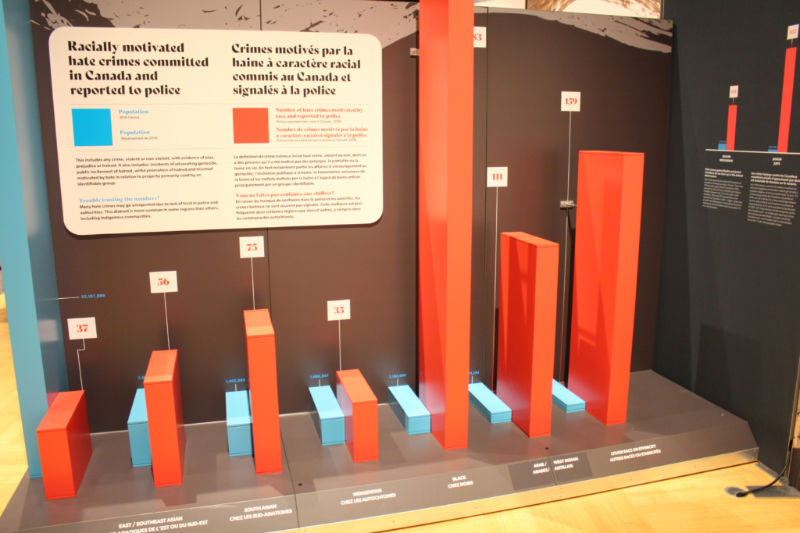
Information about racism in Canada encourages us to recognize the system we are part of. Information highlighted in the exhibit includes slavery’s shadow, the effects of colonization om Indigenous communities, statistics on racially motivated crimes, breakdown of racism experiences by ethnic and racial identity, and systemic racism.
Other panels of information along with interactive exercises show us how our minds build beliefs. The brain looks for patterns and likes to think in categories. It is a predictive machine that draws on memories and experiences to fill in the blanks. This can work well in many situations. It saves energy and time and allows us to act quickly.
Cn yu aed ths question?
The above sentence appeared in one of the information panels to illustrate how our mind fills in the blanks. Most people will interpret it as “Can you read this question?” Our pattern-building brain allows us to figure it out. However, when past experience with something is limited, the extrapolations and assumptions we make may be faulty.
When I looked through the exhibit, I was reminded of a webinar I took in June 2021 on implicit bias training given by Dr. Bryant Marks of Morehouse College. He said there are two ingredients in implicit bias: living in society and having a brain. We automatically attempt to categorize people when we meet them. That categorization may be based on stereotypes or a limited number of exposures to a particular group of people. It can focus on one or two things and not recognize the diversity within groups.
The bias shows up in ways we’re not overtly aware of. Bias in hiring occurs in a variety of ways. One of the common ways that comes to my mind is giving one resume more attention than another based on the ethnicity associated with person’s name. Dr. Marks gave a more subtle example. Bias in hiring can occur by where you place ads for jobs.
Interactive exhibits at Behind Racism: Challenging the Way We Think get us to think about our own biases.
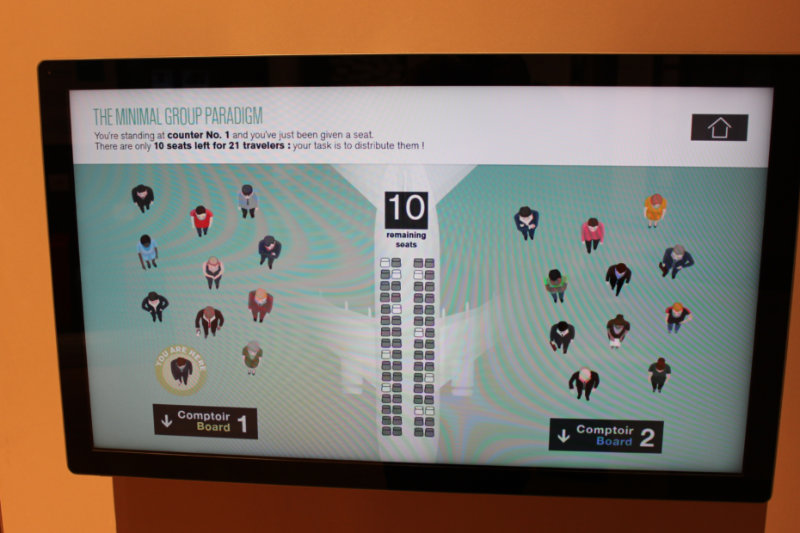
In one exhibit, the task was to assign 10 remaining airplane seats to 21 travelers. Whom do you assign them to? When I did the exercise, I consciously tried to do that in as unbiased a way as possible. That meant I consciously looked for minorities or those who presented a less polished image. That didn’t seem right either. I thought about what I would do if this was a real situation. I’d like to give the seats to those who most needed to get to the destination the soonest or to those who would be most inconvenienced by having to wait for the next plane. How do you decide that just by looking at some drawn figures? In real life, would airline personnel make the choice based on the dates of ticket purchase or time of check-in? What about the people they figure would cause the biggest uproar if they didn’t get on the plane?
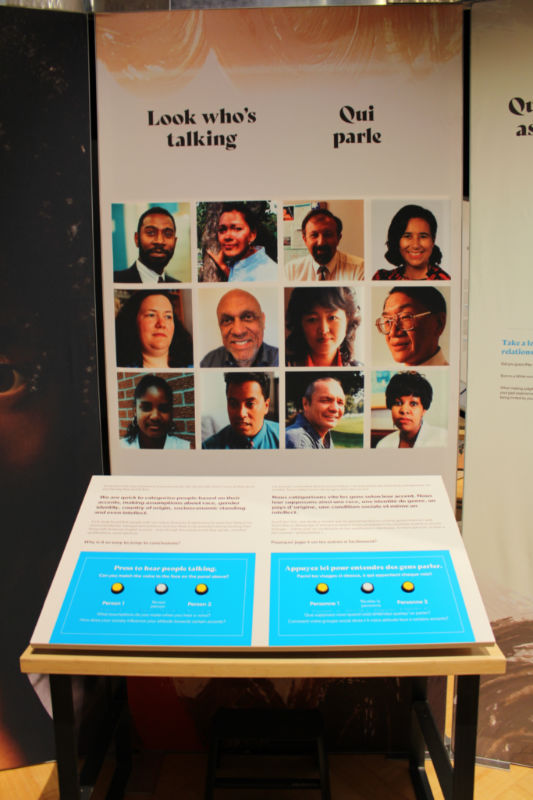
Another exhibit stated “We are quick to categorize people based on their accents, making assumptions about race, gender, identity, country of origin, socioeconomic status, and even intellect.” In an exercise to illustrate this, I listened to a voice say a few sentences about a part of their story. I then selected one of nine images as being the owner of that voice. I figured the exercise would attempt to trick us. So, I went out of my way to select less obvious choices. Of course, doing that involved making assumptions about what might be obvious choices and may have still reflected some implicit bias on my part. I didn’t do well.
So how do we deal with these hidden and implicit biases? A start is to be more aware of them by paying attention to how we think and act toward people and how we relate to people different from us. As was stated in the exhibit: The more your actions become automatic, the more you must examine them. Pay attention to the way you think and act towards others.
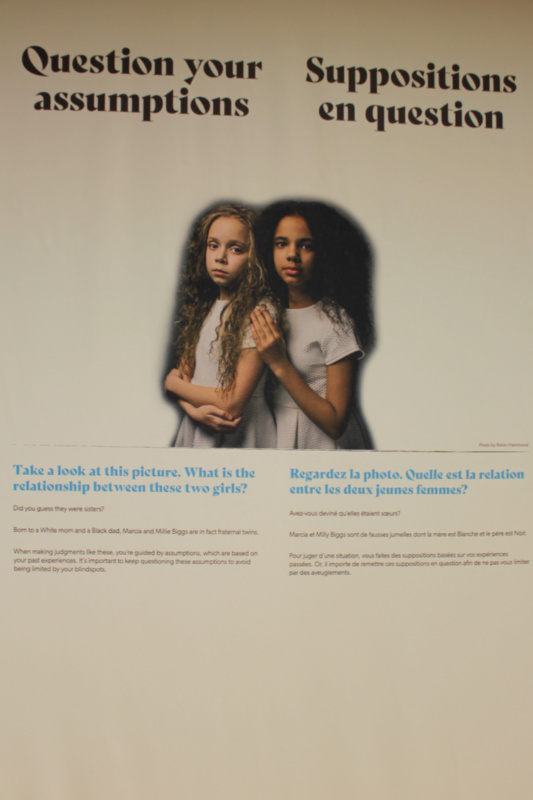
The exhibit in the above photo asks us to identify the relationship between these two girls. The answer is on the exhibit, but is a bit small to read in the photograph. It goes like this:
Did you guess they were sisters?
Born to a White mom and a Black dad, Marcia and Millie Biggs are in fact fraternal twins.
When I was writing this post, I noticed that I, at least once, wrote the name of exhibit incorrectly. I had written Beyond Racism instead of Behind Racism. That is ultimately the purpose of exhibitions like this: to get beyond racism and leave it in the past. I chose Beyond Racism as the title for the post.
The exhibit poses the following questions: If we understood these mental processes and behaviours better, could we intercept them in our own minds? If we learn to control them, could we unearth the roots of racism in ourselves? Could that lead to change within our wider communities and within our institutions?
An exhibition on its own is not going to end discriminatory practices and policies or eradicate racism. The hope of the exhibition is that it will spur greater awareness and discussion.
I am convinced that men hate each other because they fear each other. They fear each other because they don’t know each other, and they don’t know each other because they don’t communicate with each other, and they don’t communicate with each other because they are separated from each other.
Reverend Dr. Martin Luther King Jr.
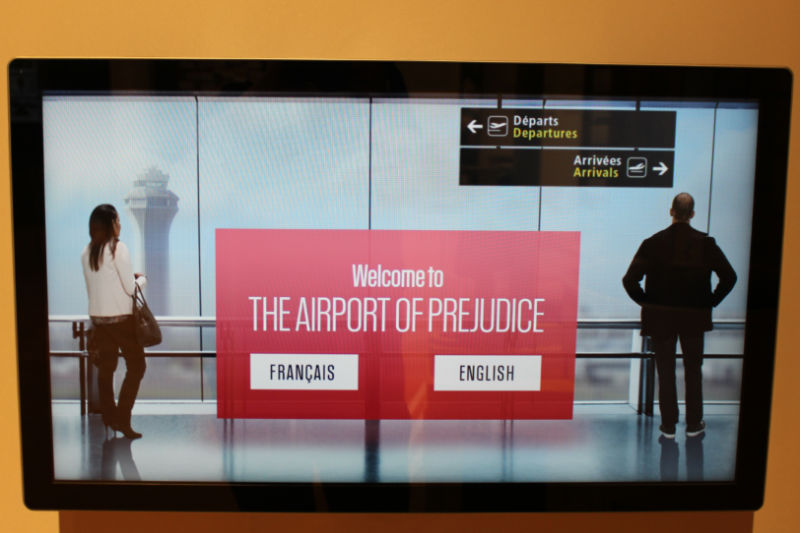
Be First to Comment